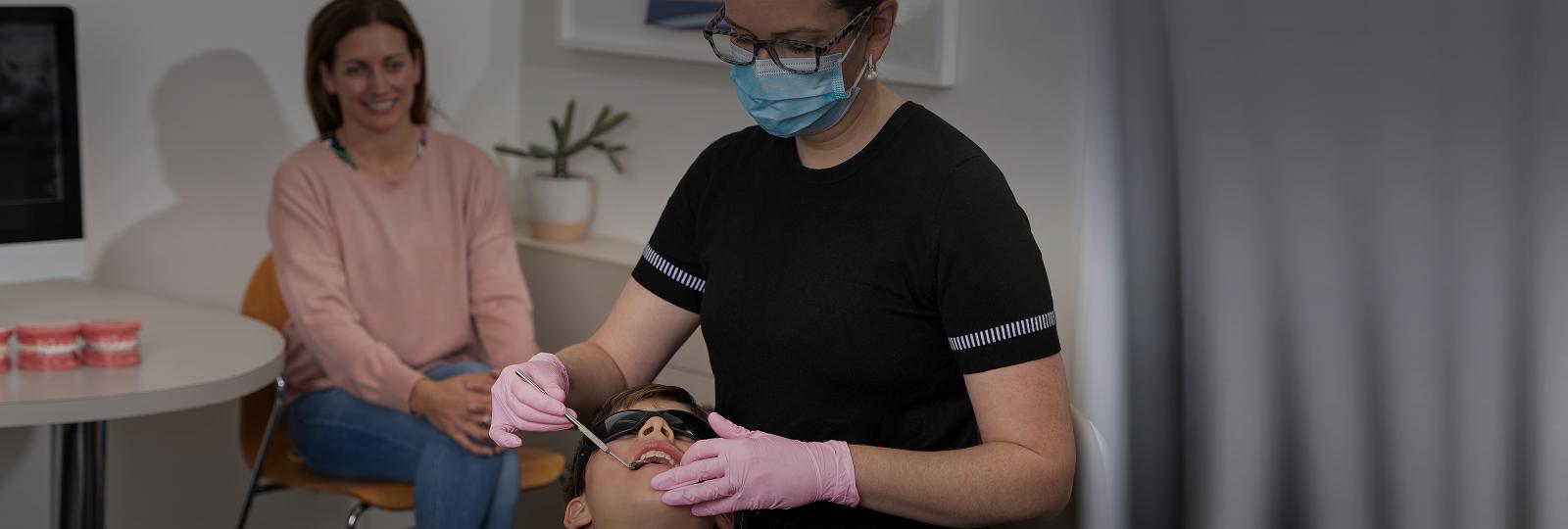Interceptive (Early) Orthodontic Treatment for Children
The Australian Society of Orthodontists recommends that every child be evaluated by an orthodontist no later than age 7. Early evaluation provides both timely detection of problems and greater opportunity for more effective treatment. Appropriate intervention can influence growth and development, preventing more serious problems later. Even when early orthodontic intervention is not necessary, we can carefully monitor the growth and development of the patient and begin treatment when timing is ideal.
Overall, the purpose of interceptive treatment is to guide the permanent teeth into their correct position and to facilitate proper growth and development of the jaws.
These are some of the specific goals of interceptive treatment:
- Create room for crowded, erupting teeth.
- Preserve space for unerupted permanent teeth and reduce the likelihood of impacted permanent teeth.
- Establish facial symmetry or balance by modifying jaw growth.
- Harmonize the width of the dental arches.
- Eliminate crossbites that, if uncorrected, may negatively affect growth of the jaws or cause premature wear on the teeth.
- Lower the risk of trauma to protruding front teeth.
- Reduce the need for tooth extraction in the future.
- Simplify and/or shorten treatment time for later corrective orthodontics.
- Improve some speech problems.
- Correct harmful oral habits.
- Improve self-esteem.
Interceptive treatment aims at establishing proper growth and development rather than focusing specifically on the alignment of the teeth. This is because many of the permanent teeth have yet to erupt. In specific instances, braces on the front teeth may be indicated for a short time.
Interceptive treatment is followed by an interim resting period during which time the patient usually wears some form of retainer while the remainder of the permanent teeth are allowed to erupt. After eruption of all of the permanent teeth, comprehensive treatment with full braces may be necessary to align the teeth and achieve a proper bite for optimal aesthetics and function. In some instances, comprehensive treatment is deemed unnecessary because a reasonable alignment and functionality of the teeth has occurred following interceptive treatment.
